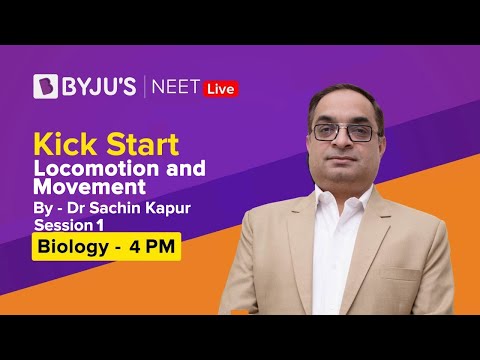The sliding filament theory of muscle contraction was given by A. F. Huxley and other scientists in 1954. It explains the attachment of actin and myosin filaments in muscle contraction. It describes how the contractile force is developed and a sarcomere gets shortened leading to muscle contraction.
1. Which of the following ions is responsible for unmasking of active binding sites on actin for forming cross-bridge during muscle contraction?
(a) Potassium
(b) Magnesium
(c) Sodium
(d) Calcium
Answer: (d)
2. Sliding theory states that
(a) actin and myosin filaments shorten and slide past each other
(b) when myofilaments slide past each other, shortening of actin filaments occur
(c) when myofilaments slide past each other, shortening of myosin filaments occur
(d) actin and myosin filaments do not shorten, they only slide past each other
Answer: (d)
3. Which of the following is correct for muscle contraction?
(a) Shortening of actin filaments
(b) Shortening of A, H and I bands
(c) No change in A bands
(d) Sarcomere do not shorten
Answer: (c)
4. Which of the following shows ATPase activity during muscle contraction?
(a) Actin
(b) Tropomyosin
(c) Troponin
(d) Myosin
Answer: (d)
5. Which of the following is correct for muscle contraction?
(a) Distance between two Z line increases
(b) Length of I band increases
(c) Length of A band remains constant
(d) Length of H zone increases
Answer: (c)
6. Sarcomere is
(a) the part between two Z-lines
(b) the part between two I-bands
(c) the part between two A-lines
(d) the part between two H-lines
Answer: (a)
7. This is a contractile protein of muscles
(a) Myosin
(b) Tubulin
(c) Tropomyosin
(d) All of the above
Answer: (a)
8. Which of the following is a functional unit of striated muscles?
(a) Myofibril
(b) Cross-bridges
(c) Z-band
(d) Sarcomere
Answer: (d)
9. When actin filaments are dragged towards M-line, it is known as
(a) recovery stroke
(b) refractory stroke
(c) power stroke
(d) none of the above
Answer: (c)
10. Accumulation of __________ causes muscle fatigue.
(a) lactic acid
(b) myosin ATPase
(c) carbon dioxide
(d) none of the above
Answer: (a)
These were some MCQs on Sliding Filament Theory. Learn MCQs on related topics for NEET, at BYJU’S.
Recommended Video:

Important MCQs for NEET Biology:
- MCQs on Life Processes
- MCQs on Lac Operon
- MCQ on Lipids
- MCQ on Diversity in Living World
- Apiculture MCQs
- MCQ on Meiosis
Comments